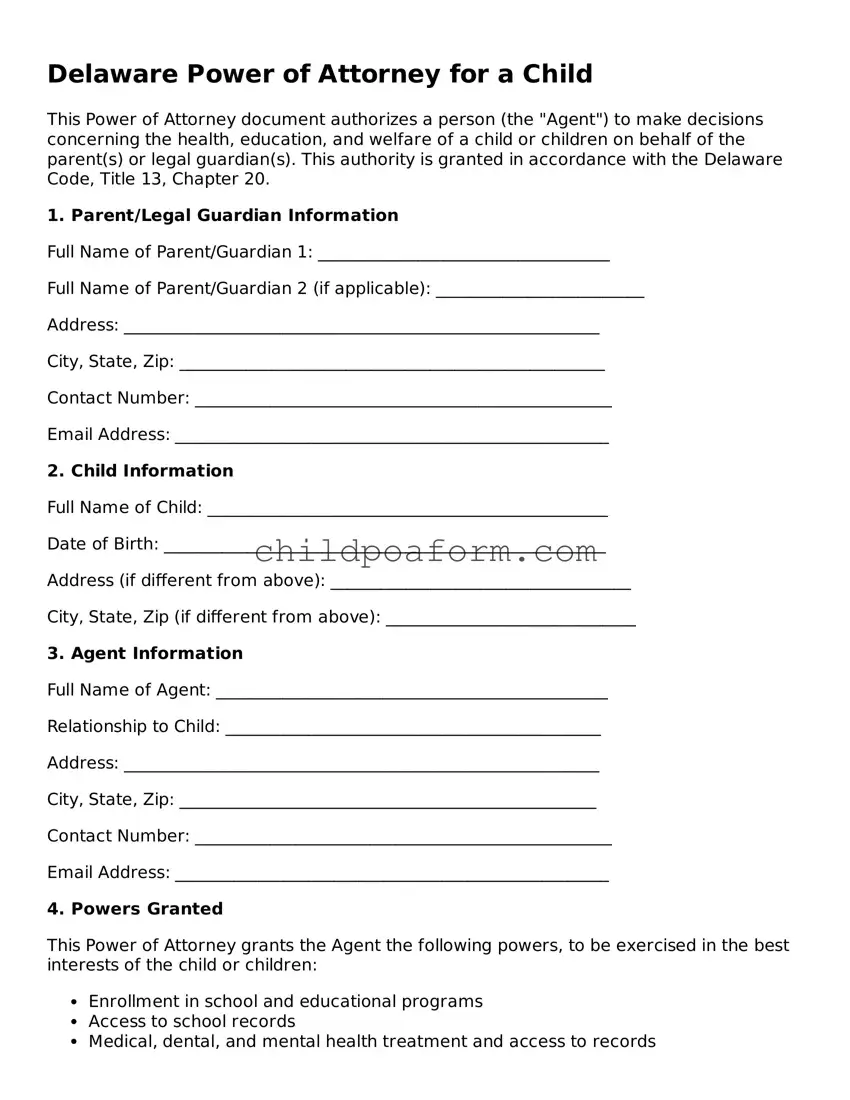Instructions on Utilizing Delaware Power of Attorney for a Child
The Delaware Power of Attorney for a Child form empowers a person to make important decisions on behalf of a child, typically when the parents are unable to do so due to various reasons. This legal document is crucial for ensuring that a child's welfare is handled appropriately in the absence of their parents. Once this document is completed, it grants the authorized individual the right to make decisions regarding the child's education, health, and welfare. Following the right steps to fill out this document accurately is important to ensure its legality and effectiveness.
- Begin by gathering all necessary information including the child's full name, date of birth, and social security number, as well as the full name and contact information of the individual who will act as the attorney-in-fact.
- Enter the date on which the Power of Attorney will become effective, and specify the duration if it is not intended to be indefinite.
- Detail the specific powers being granted to the attorney-in-fact. This may include decisions about the child's education, health care, and general welfare.
- If there are any powers that the parents or guardians do not wish to grant, clearly specify these exceptions in the designated section of the form.
- Both parents or legal guardians, if applicable, must sign the form in the presence of a notary public. If only one parent is available, additional documentation may be required to explain the absence of the other parent's signature.
- The attorney-in-fact must also sign the form, accepting the responsibilities and powers being granted.
- After all parties have signed the document, it should be notarized. This usually involves the notary public witnessing the signatures and then sealing the document.
- Keep multiple copies of the notarized document. Provide one to the attorney-in-fact, keep one for your records, and consider giving copies to relevant institutions such as the child's school or medical provider.
After completing and notarizing the Power of Attorney for a Child form, it's now legally binding. The attorney-in-fact has the authority to make decisions within the scope of powers granted in the document. It's important to communicate with all relevant parties, including the child (if appropriate), about this arrangement to ensure everyone understands the roles and responsibilities defined. Regular review of this document is recommended to ensure it continues to meet the child's needs and to make any necessary adjustments..
